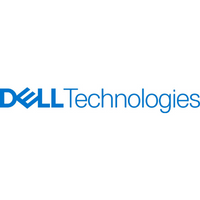
Dell Technologies
View Brand PublisherHere’s what the future of work will look like
The future of work relies heavily on the interaction between man and machine, leading to increased productivity and improved business outcomes.
We are in an era of constant technological advancement, with newer and better solutions emerging every day to solve every conceivable issue. Industries across the world have used technology to improve their processes and regain profits. Companies have had to adapt to an ever-changing work environment – one that is increasingly online and hybrid – to ensure business continuity, and have been modifying their trajectories according to their understanding of the future of work.
What is the future of work? It is simply a projection of the changes in our definitions of work, workers, and workspaces. There is a great focus on the involvement of technology to redefine who does the work, how it is done, and where.
Here are a few trends that employers and experts deem inevitable:
Remote work
While one might argue that the pandemic created the need for adaptive remote workspaces and better work-from-home opportunities, the shift towards workplace flexibility – bolstered by technological advancements – is not a recent phenomenon. The pandemic simply accelerated this adoption of dynamic working environments because of unavoidable conditions. This need to keep the ship sailing meant that companies had to come to terms with employees working from anywhere at any time, which sought to reassess what the 9-5 professional work-life narrative means.
Given that remote work has become popular due to its relative ease and cost-saving capabilities, it is safe to assume that it is the new norm in most industries. So much so, it is also dictating the career decisions of most employees - particularly Gen Zs and Millenials. However, a successful digital workplace needs the right mix of flexible, secure and responsive technologies, which require a steady investment. Several companies, particularly tech companies, have thus shifted to a fully remote working environment and expect to continue that strategy for the time being by investing heavily in sustaining operations.
Remote work has also stretched the boundaries of location and technology, further growing the workforce. Thus, the trends that have emerged from this massive disruption by the pandemic are sure to reshape the way we work in any capacity.
Automated processes
Experts opine that the future of work involves automating processes and events using technology and digital platforms. This ensures employees collaborate using AI and tech tools to innovate and produce efficient results.
These tools include meeting and chat software, robotics, analytics software, developed equipment, AI-powered chatbots and such. The focus is on harnessing the power of technology to automate small regular processes so that employees can shift focus to the bigger organisational goals, thus increasing their engagement and productivity.
However, not every job can be automated or performed remotely. Jobs in healthcare, administration, retail, sport, travel and recreation are some of the many sectors with high physical proximity, where complete remote work or automation is either impossible or incapable of delivering efficient results. What does this mean for their futures then?
A report by McKinsey Global Institute in 2021 divided more than 800 occupations across eight focus countries into ten arenas by quantifying the level of proximity that each occupation demanded. The report identified that the occupations that required high levels of physical proximity were “likely to see greater transformation after the pandemic.”
However, the report also noted that some remote work is best done in person and that activities such as critical business decisions, onboarding, and providing feedback “may lose some effectiveness when done remotely”.
This has encouraged the concept of hybrid workspaces.

Hybrid workspaces and flexible work arrangements
Companies are now looking at shifting to a hybrid work setting - moving some projects completely online to increase efficiency and keeping unavoidable high-proximity tasks in person. Conducting remote planning using tech tools to execute in-person events is a common collaborative approach taken by many companies today.
Several companies are also letting their employees choose which days they can work in person, if they want to at all. They are also establishing systems in place to ensure that employees receive any support they’d need to set up their remote workspaces. The adoption of an asynchronous workflow to accommodate all employees is another emerging trend.
Employers are also implementing flexible leave policies and no-question auto-approval on leave requests to empower employees in a trust-first culture. This also ensures that employees are able to better manage their time because they have control over their schedules and the power to make these decisions.
Experts opine that, since hybrid work is the unavoidable approach in the future, companies must craft maximum support policies that encourage hybrid work adoption among employees. How these policies include nuance and ensure the engagement of all the employees will differ from one company to the other.
Dell Technologies identifies that CIOs must keep a few pointers in mind to craft a successful and sustainable digital workplace strategy. These are:
01. Delivering and supporting a high-performing, secure and intelligent PC experience for their employees.
02. Enabling seamless collaboration through shared productivity appliances, cloud applications, and such tools to increase employee productivity.
03. Adopting flexible technology and payment solutions, and as-a-Service delivery models to control costs. (Read more here)
04. A scalable hybrid cloud strategy that improves IT’s visibility and oversight of all the technologies in the organisation to maximise cloud consistency and flexibility.
05. Ensuring that the digital workspace environment is cyber secure throughout so all employees can access the tools they need to perform their functions without a hitch. (Read more here)
Focus on employee efficiency and growth
The current market is talent-driven, which means employers must, now more than ever, focus on hiring the right talent and providing them with advanced training, reskilling, and ample opportunities to upskill and grow within the company. An ESG study commissioned by Dell Technologies, Intel and VMware in March 2021 identified that leading organisations (among 2,000 IT decision makers) experienced a 21% increase in employee productivity which is 62% more than organisations that struggle to support remote work.
Employers must be open to the possibilities of emerging new jobs and career paths for employees and utilise foreign labour where applicable. Companies must strive for greater inclusion and collaboration within the talent pool to achieve better outcomes.
The future of work will require unlearning old patterns of work and emphasising on young people in leadership positions. This will bring in a new wave of understanding of how flexibility and efficiency will look like in different companies.
If you are looking to scale up, make the most of what Dell for Startups has to offer. To connect with a Dell representative,







